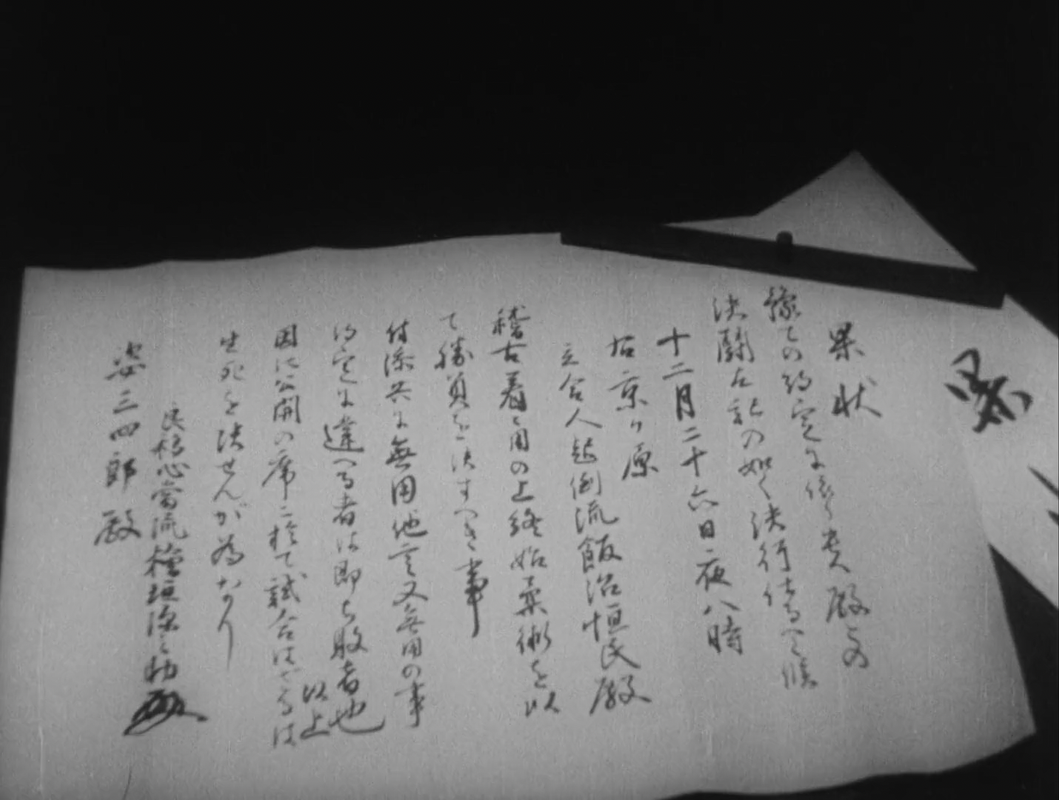Sprawa Gorgonowej [The Gorgon Case] (Janusz Majewski, 1977)
Dec
30
1931

Ewa Dałkowska as governess Rita Gorgonowa. DP: Zygmunt Samosiuk.
“We're not here to play dominoes.”Canon City (Crane Wilbur, 1948)
Dec
30
1947

A calendar page. It's December 30, 1947. DP: John Alton.
La noche de los Inocentes [Night of the Innocents] (Arturo Sotto Díaz, 2007)
Dec
28

The cast in the hospital. Lighting and stances appear theatre-like. DP: Ernesto Granado.
“On the night of December 26, at 8:00 on Ukyō-ku.”姿三四郎 [Sugata Sanshirō / Judo Saga] (Akira Kurosawa, 1943)
Dec
26
8 p.m.

A letter beckoning to come to Ukyō-ku, on December 26, at 8 o'clock. DP: Akira Mimura.
Balada pro banditu [Ballad for a Bandit] (Vladimír Sís, 1979)
Dec
24
Christmas Eve – Nikolas
.webp)
The bandit and his bride. DP: Viktor Růžička.
A Nikolas or Nicholas for Christmas Eve.
The tale of legendary highwayman Nikola Šuhaj from Koločava.
大佛廻國 [Daibutsu kaikoku / The Great Buddha Arrival] (Yoshirō Edamasa, 1934)
Dec
22
.jpg)
Buddha takes a holiday. A gigantic Buddha statue rests his hand on a multi-story building in possibly Kyoto. In front and sprawling out are multiple small wooden establishments with people in kimono and several bicycles in front of them. A tram, the only thing that suggests the 20th century, can be seen almost off-screen. (via). DPs: Haruzo Ando & Harumi Machii.
Something tall*
In this very early kaiju moving picture, Buddha returns and goes on a sightseeing trip through Japan.
* the Bales 2025 Film Challenge for December has a few dateless themes. This is one of them.
“Sloane! Be lucky!”Nowhere to Go (Seth Holt + Basil Dearden, 1958)
Dec
22
Tue
.png)
A man checks into a hotel. A wall calendar reads December 22, a Tuesday. DP: Paul Beeson .
– Paul Gregory
“He's growing! Look! See how he's growing! I have seen the Lord! The Lord! The Lord!”Die Blechtrommel [The Tin Drum] (Volker Schlöndorff, 1979)
Dec
21
winter solstice
.jpg)
Little Oskar with his tin drum. DP: Igor Luther.
Something short for winter solstice.
– Schugger-Leo
On the eve of World War 2, little Oskar – just three years old – decides he doesn't want to grow anymore.
Accidente 703 [Los culpables] (José María Forqué, 1962)
Dec
21

A darkened room. People take care of a man slumped on a coach. A wall calendar tells us it's the 21st. DP: Juan Mariné.
“What is that? What is that I hear? Where's it coming from? I hear a siren, but I don't see any fire, I don't see any smoke. Whenever there's a siren, it means there's a fire, but I don't see any smoke. That siren. Where is it coming from? Where's that sound coming from?”Santa and the Ice Cream Bunny (Richard Winer + Barry Mahon, 1972)
Dec
20

A bunch of screaming children on top of a red firetruck stand right behind the driver, a stoic person in a pink bunny costume. DPs: William Tobin & Richard Winer.
– Santa Claus